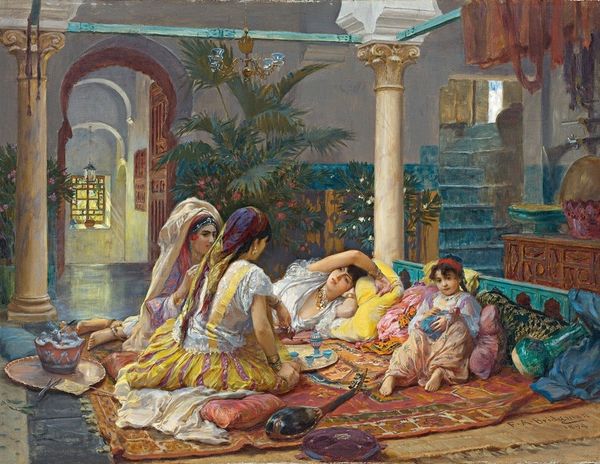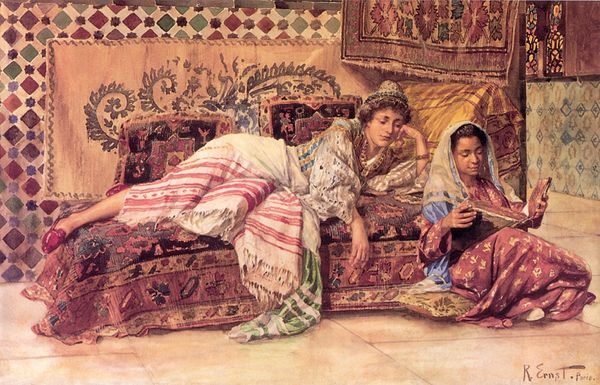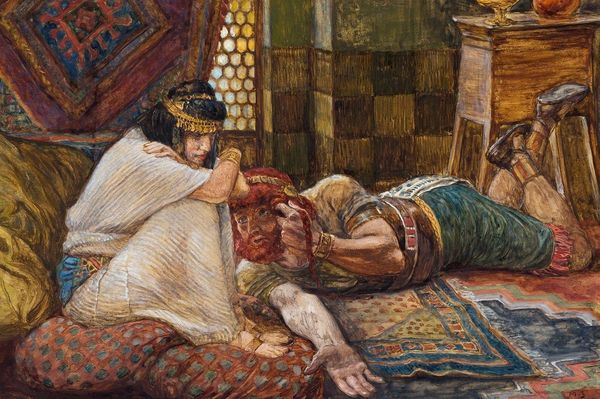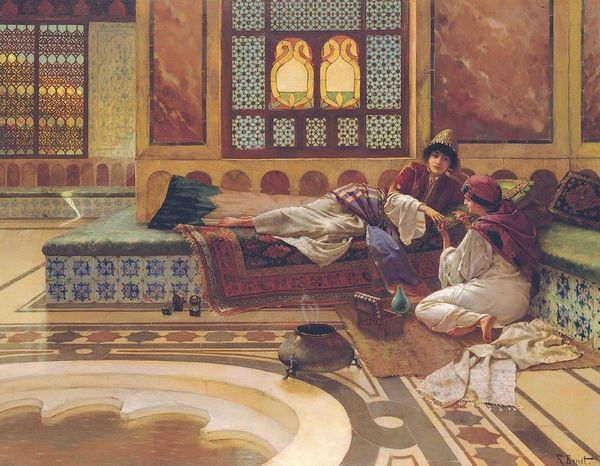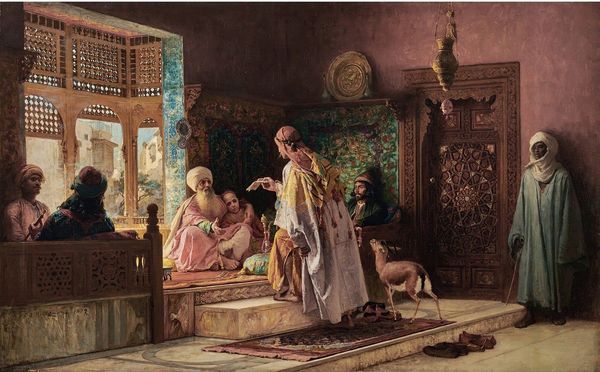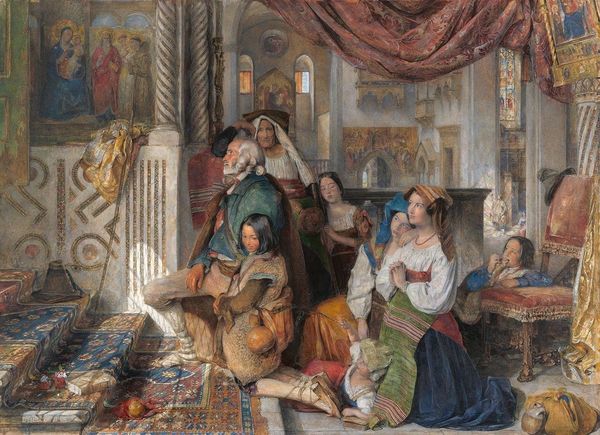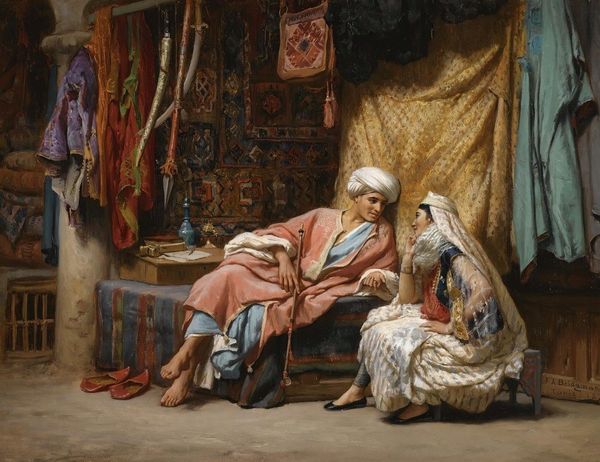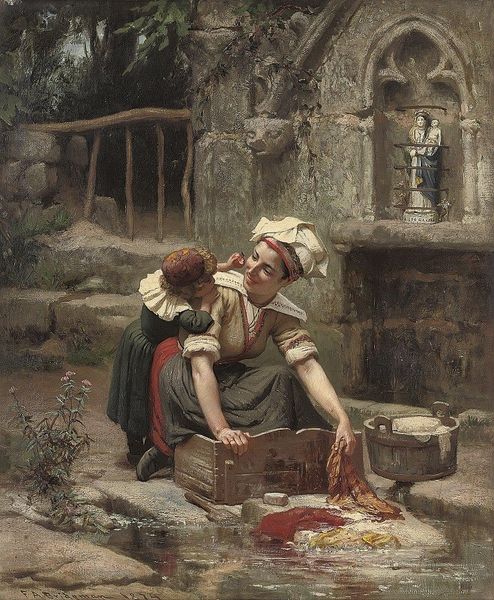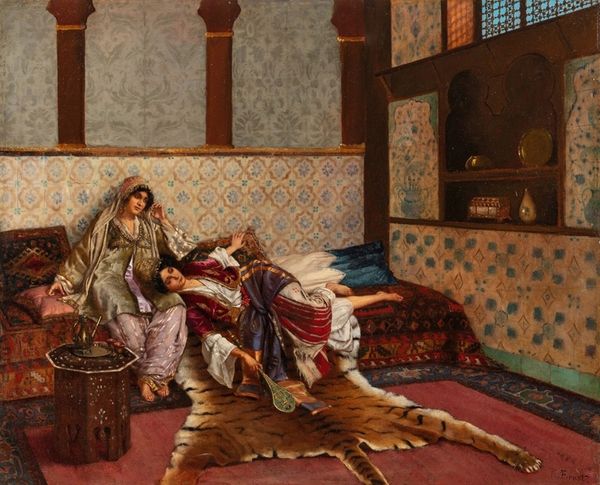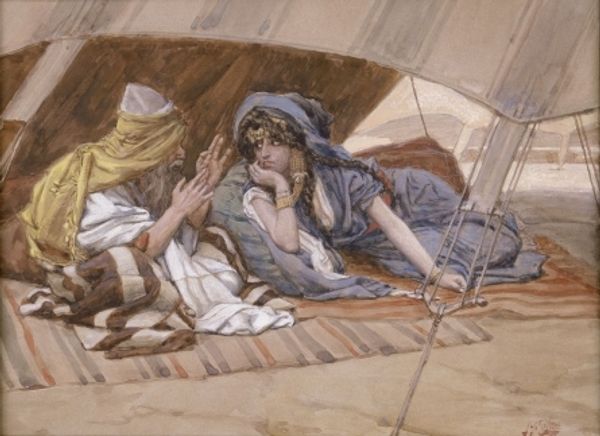
Copyright: Public Domain: Artvee
Curator: So here we have James Tissot's "David Plays the Harp Before Saul," created sometime between 1896 and 1902. The artwork incorporates oil paint, watercolor, and coloured pencil. What strikes you when you first look at it? Editor: Well, I’m immediately struck by the light, how it almost breathes. It's a hushed, intimate scene—the colour palette definitely pulls you in. You almost feel you could drift off right next to Saul. Curator: There's definitely a vulnerability to Saul as he lies there, exposed to David’s music, and perhaps his mercy. To me, Tissot captures the complex relationship between the two. Look closely at how David is rendered, at his hands dancing across the strings of the harp. Editor: Right, and let's talk about the materials here. Oil, watercolour, pencil – it's quite a mix. He's really pushing the boundaries of how these materials interact. Also, is that goat hair under Saul? It makes me think about what artisanal processes he used to produce these components for the image. How readily available were they, really? Curator: Fascinating thought. And beyond that technical consideration, I think it adds another layer to the theme, about David’s service towards the king. There’s an intense intimacy implied by his proximity as he plays to the king. He offers respite from Saul's tormented mind, yet at the same time is a reminder of Saul’s own fallibility. It speaks volumes about leadership, envy, and ultimately, faith. Editor: And let’s talk about Tissot, too. What was his studio setup like? Where did he source the different media? Did he have assistants to produce these intricate details or was he truly a lone visionary. The painting also shows, you know, the labour it took to create all these rich fabrics and textures, too. It grounds the narrative. Curator: Absolutely. Ultimately, “David Plays the Harp Before Saul” feels so alive with emotions. Editor: Indeed! Thanks for unpacking this gorgeous image with me. The layers of making that add weight to its resonance across the ages makes the biblical story relatable through material language.
Comments
No comments
Be the first to comment and join the conversation on the ultimate creative platform.
